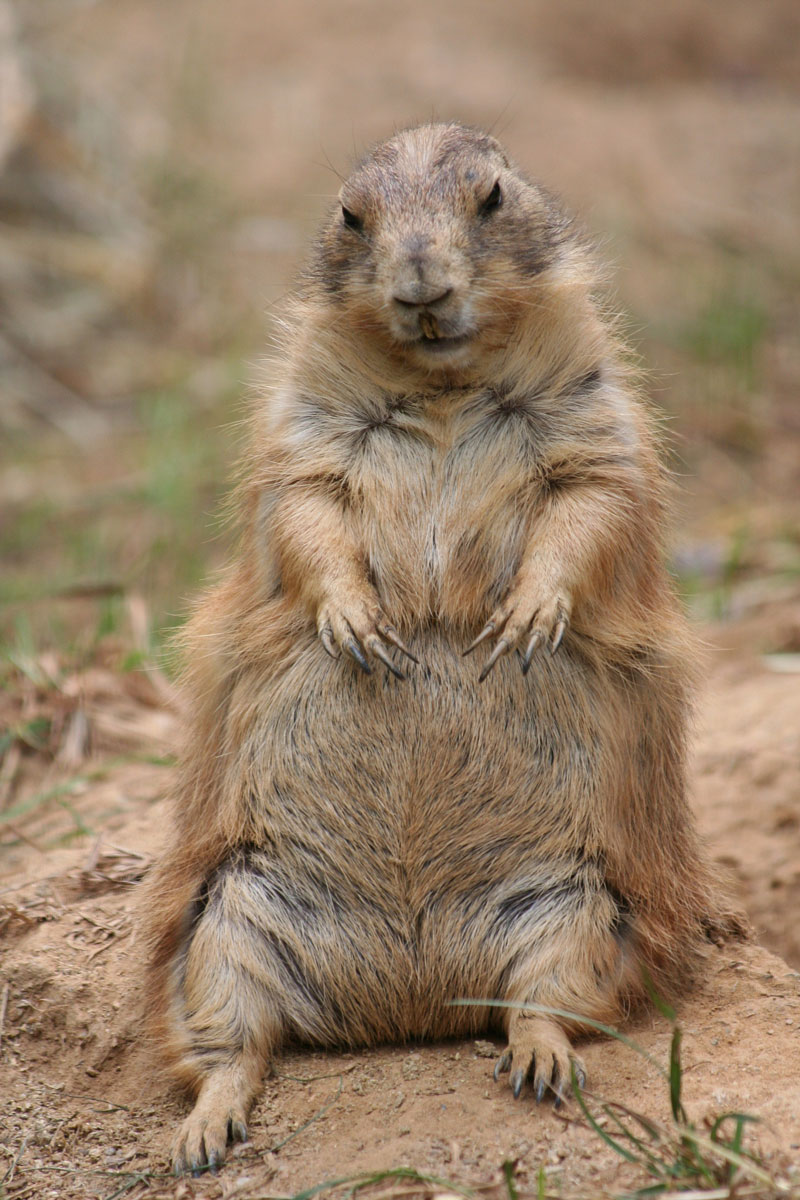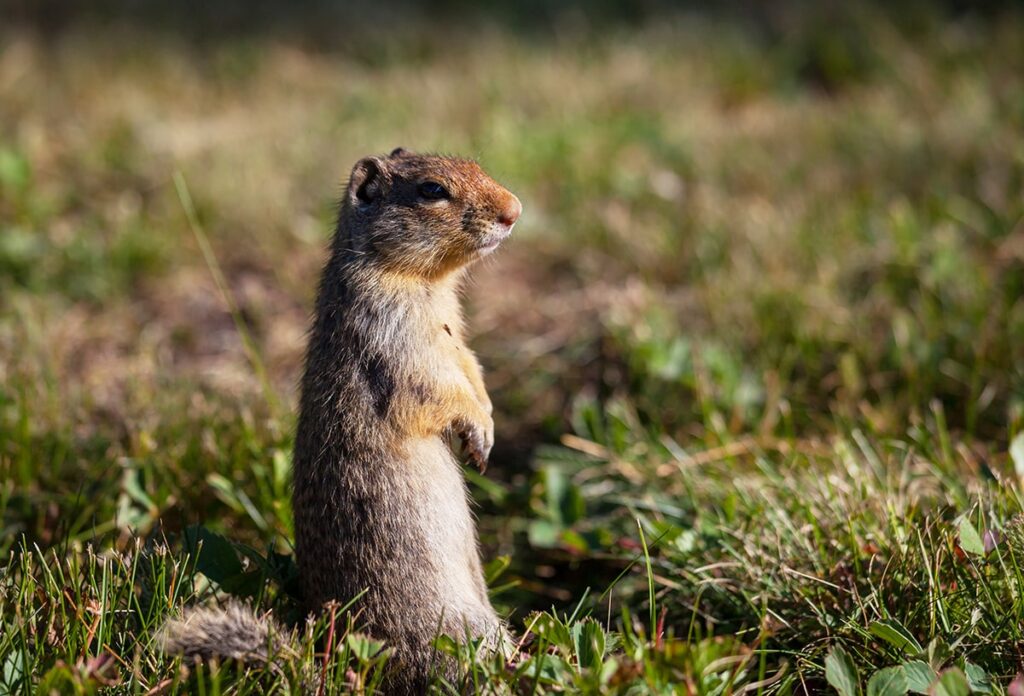- The whistle: In English, groundhogs are also called ‘whistle pigs’ because they ‘whistle’ when they are in danger (to warn other groundhogs)
- Physics: Woodchucks usually grow 30-60 cm long and weigh up to 7 kg (some species can grow larger)
- Groundhog Day: According to the American tradition ‘Groundhog Day’, held on February 02 every year, “winter will be 6 weeks longer if a groundhog sees its shadow on Groundhog Day”
- Livewise: Groundhogs live both in water and on the ground; they are both good swimmers and able to climb trees
- Habitat: Woodchucks live especially in areas where the forest meets open areas such as fields, roads or rivers
- Cave systems: Groundhogs live in underground burrow systems that are specially designed to confuse intruding predators
- Winter hibernation: Groundhogs hibernate in the winter and therefore spend the whole summer “fattening up” so they have energy reserves for the long winter
- Food: Groundhogs eat a wide variety of plants: grasses, berries, flowers, roots, mosses and lichens. They drink very little water; instead, their fluid needs are met by watery plant food
- Classification: Groundhogs belong to the squirrel family (Sciuridae) and are the only member that has a twisted spine. Marmots are also the largest members of the squirrel family
- Species: There are 15 species of marmot, with the Alpine marmot (Marmota marmota) being most common in Europe and the woodchuck (Marmota monax) in North America

Fact: In some cases, marmots can grow to over 60 cm long and weigh more than 7 kg!
Facts about woodchucks
- Names: Woodchucks are called ‘groundhogs’ in English and ‘Marmota monax’ in Latin
- Distribution: Woodchucks are the most widespread and well-known marmots in North America
- Size: Living in areas with few predators, woodchucks can grow up to 80 cm long and weigh up to 14 kg
- Age: In the wild, woodchucks live up to 6 years, with 3-4 years being the average. In captivity, they can live up to 14 years
- Food: Woodchucks feed primarily on plants, but they can also eat insects, snails, caterpillars and the like.
- Squirrels: Like squirrels, woodchucks have also been observed sitting up and gnawing on nuts. However, unlike squirrels, woodchucks do not save the nuts for future consumption


